It’s energetic. It’s uplifting. And it’s motivational. Emerging from the trance scene, hardstyle music has been around since the late 1990s, and it’s still as popular as ever among loyal fans.
As a commercially accepted genre, many hardstyle artists perform at the biggest EDM festivals worldwide. Just like the sounds it employs, Hardstyle music is BIG.
If you’re a hardstyle music fan and want to learn how to make your own hardstyle tracks, you’ve come to the right place. We’ll be looking at what elements go into making hardstyle music, and guide you step by step through the sound design, structure and creation of your very own hardstyle track!
So fire up your DAW, and get ready for some epic, epic times!
Hardstyle Music: Basic Elements
As with any genre within EDM, hardstyle has morphed over the years spawning sub-genres and influencing others. But no matter the variation some elements are essential to the captivating sound that defines hardstyle tracks.
Tempo
The tempo, or BPM , of hardstyle is generally between 145 and 150 BPM.
Kick Drums
The most defining element of a hardstyle track is the distorted kick drums. Hardstyle kicks come in all shapes and sizes: gated kicks, pitched kicks, reverse bass kicks, the clap kick, and the fav kick.
One thing they all have in common is heavy processing, and liberal use of distortion and EQ to create a punchy sound.
Because the hardstyle kick is so distinctive and huge there's not much else in the way of drums going on. Some higher percussion such as snares and cymbals may be used but not as much as you'd hear in other genres.
Synths
The other key elements in a hardstyle track are the euphoric synths, most often supersaws. These play the main melody of the song.
Spelling
Hardstyle producers like to get creative with their spelling. Artist and track names have a tendency to use a lot of Qs and Zs. While not a part of the music-making process, it's good to know so your track fits in to the hardstyle world.
Structure
Finally, a good hardstyle track will follow a specific structure. Again, this has changed over the years but a popular structure in the early 2010s was:
Intro - MidIntro - Break - Climax - MidOutro - Outro
The track Rock Civilization by Headhunterz follows this structure to a tee. Play the track and follow the breakdown below.
0:00 - 0:53 - Intro
Intros are generally sparse, and used by DJs to mix in from the previous track.
0:53 - 1:50 - MidIntro
The MidIntro is where you can hear the distinctive hardstyle kick make an appearance, along with other elements that will later play a larger role in the track, including scratch sounds and the vocals.
1:50 - 3:17 - Break
This is where the atmosphere and tension are really ramped up. Time to get the crowd excited - build, build, and build some more!
3:17 - 4:09 - Climax
This is the section everyone's been waiting for. All the melodic elements come in to play, and it's generally the most energetic part of a hardstyle track.
4:09 - 5:00 - MidOutro
The MidOutro functions as a kind of reverse MidIntro, letting things wind down after the climax.
5:00 - End - Outro
If you listen carefully you'll notice this is almost exactly the reverse of the intro, giving the DJ a chance to introduce the next banger.
As discussed, some individual elements of hardstyle change from artist to artist, and year to year. We'll be focusing on the classic hardstyle sounds of the early 2010s for this tutorial, looking to Headhunterz for inspiration.
How to Make Hardstyle: Step 1 - Create the Kick Drum
Since hardstyle kicks are the most defining factor of hardstyle tracks let's go ahead and create the drum sound.
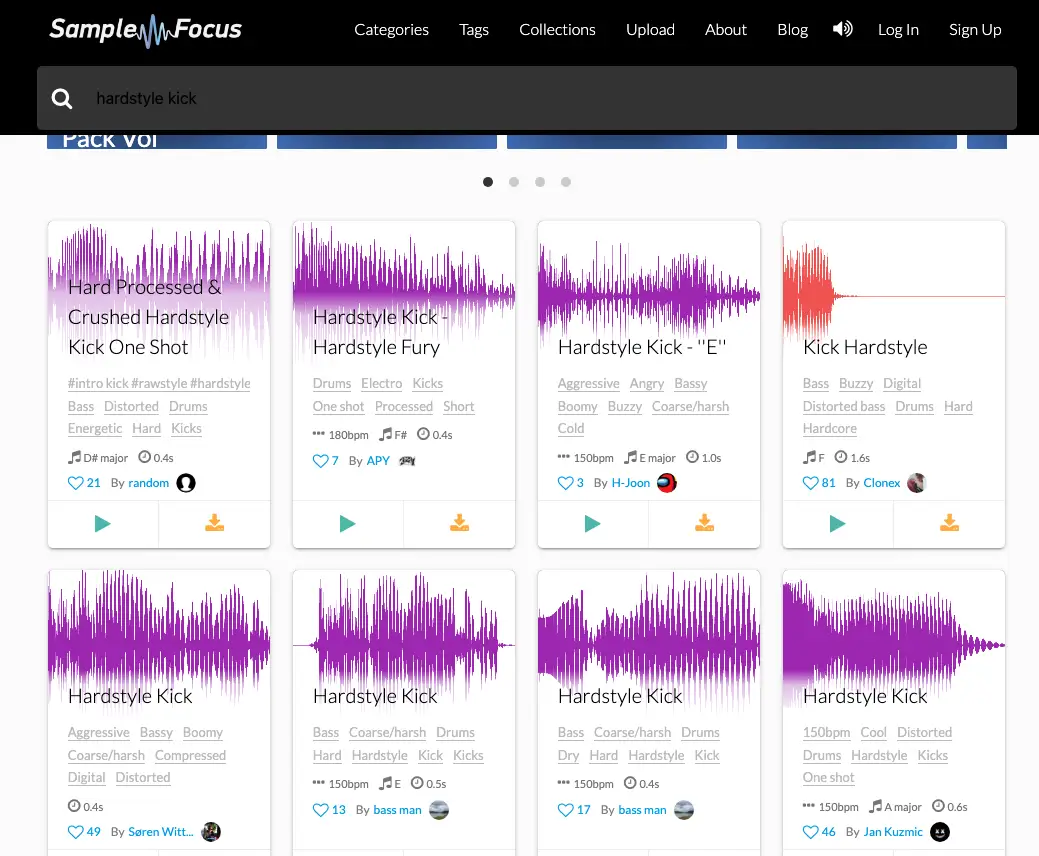
There's many a sample pack available for hardstyle music, all of which include a large selection of distorted kick samples. This is the quickest and easiest way to get your rhythm section up and running, but since the kick drum is such a defining characteristic in hardstyle, creating your own gnarly kick from scratch is a way to stand out in the scene.
The goal here is to design a kick sound that has a powerful low end, a mid-range that pushes through the mix, and a high end that sizzles.
To begin with create a MIDI region and program a simple four-to-the-floor pattern where the kick plays on every quarter note:
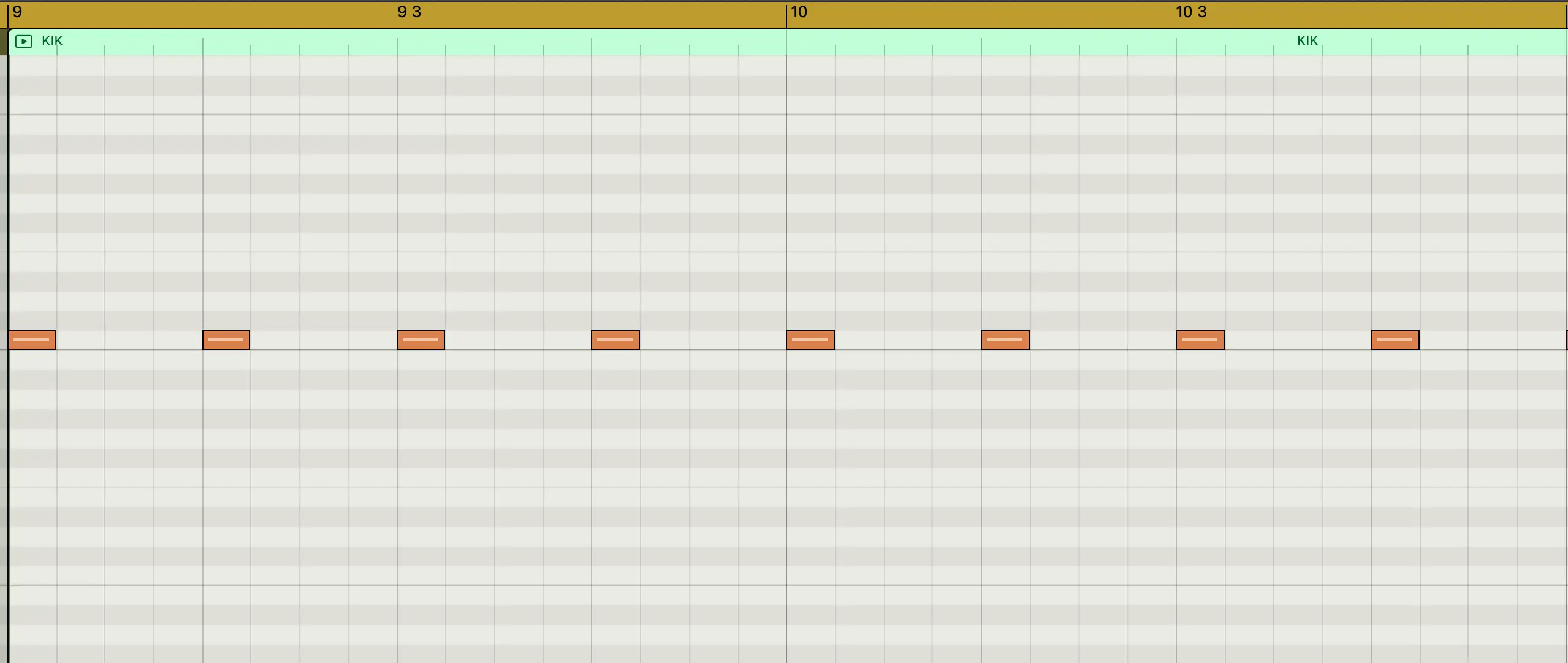
For the sound I've loaded up an instance of Native Instruments TRK-01 Kick module, and found a preset sample that is close to a 909 kick sound:
From here, I adjusted the settings to blend that kick sample with a synth sound on the second layer, added some drive distortion to both layers, and adjusted the attack of the synth so it plays after the initial transient.
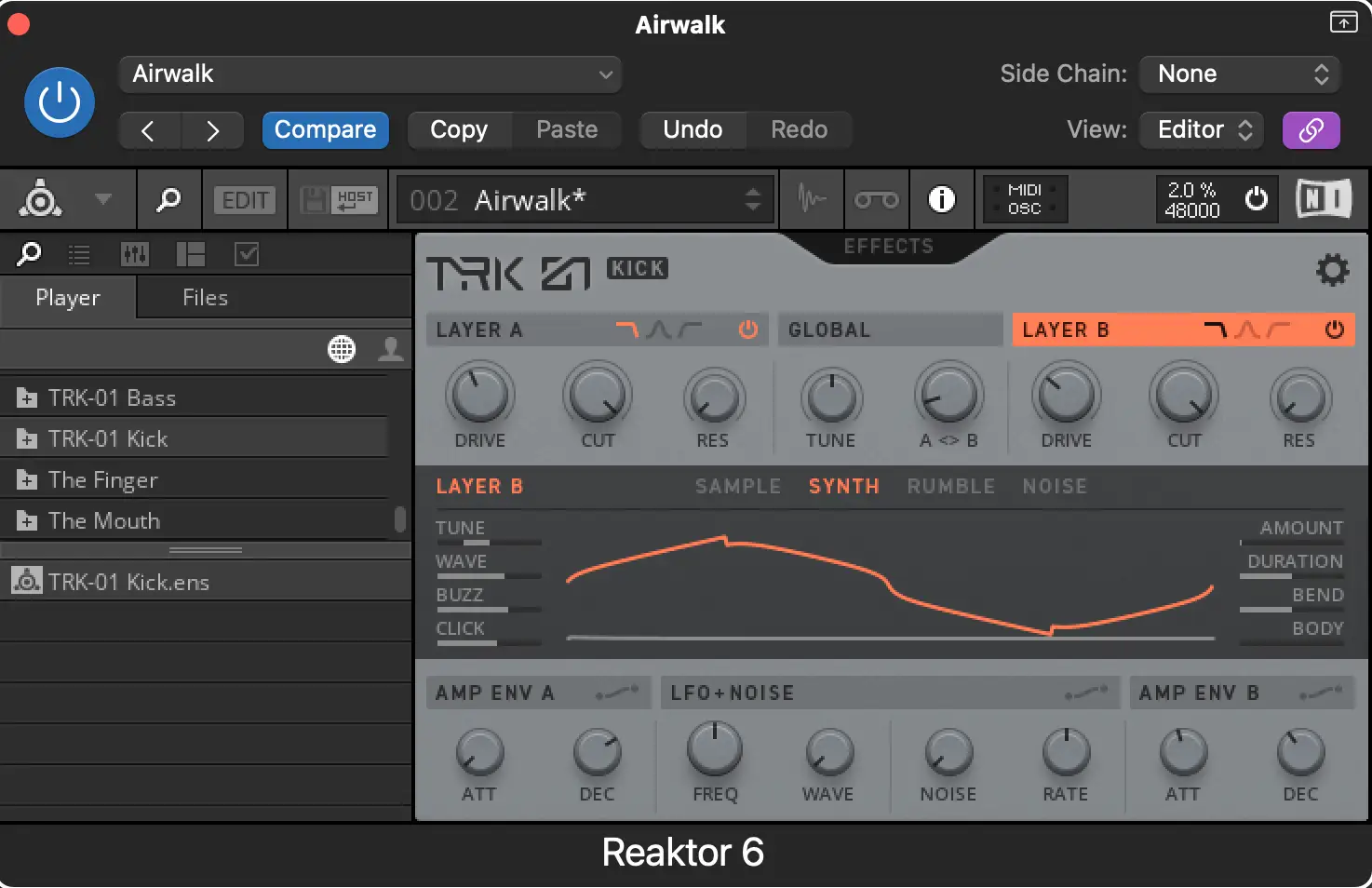
Now we're getting closer to a hardstyle kick sound:
Distortion plays a big role in the hardstyle kick sound, so whether you use an all-in-one solution like the TRK Module, or layer multiple kick samples together to get a unique sound you'll want to add some processing on the kick drum channel.
Here's the effect chain I've put together for my kick:
- saturation
- mid-range EQ to bring out the click of the transient
- distortion
- another EQ to take out a nasty resonant frequency
- compression to reign it all in
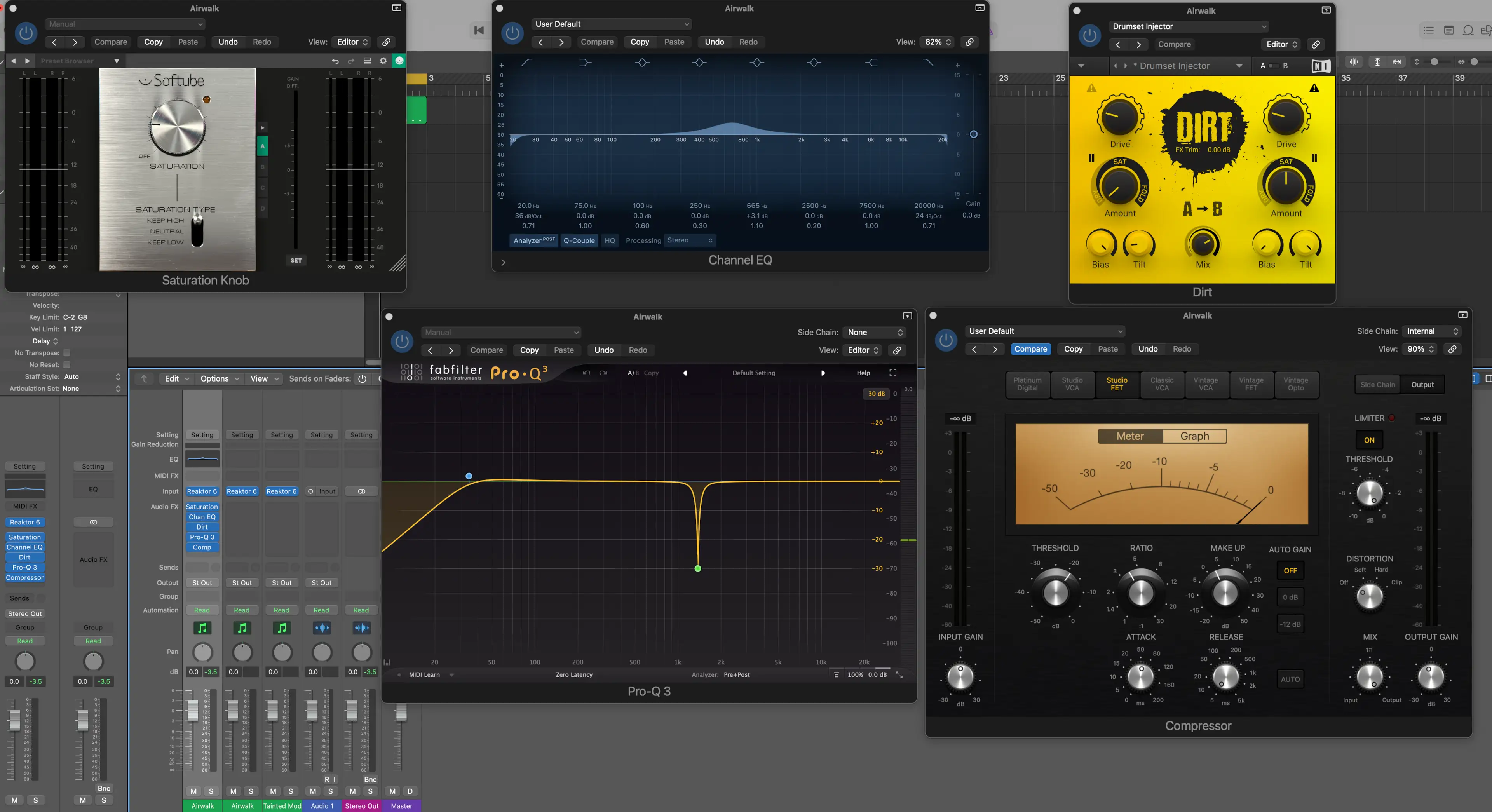
The following clip has the kick playing as the insert effects are added on by one:
I'll leave this as it is for now, and come back to fine tune the settings as I add other instruments. Onward!
How to Make Hardstyle: Step 2 - Create the Lead Sound
Next, let's create a lead sound for the main melody. The idea here is to create a giant super-saw synth lead, and there's plenty of options for doing this.
Plugins like Massive, Serum , and Omnisphere can all get the job done. Whether you're using wavetable, additive , or subtractive synthesis to build a sound from scratch, or tweaking a preset, the sound needs to be really thick. I mean, really thick.
What I've done for this track is a combination of the two: a saw wave preset from Massive:
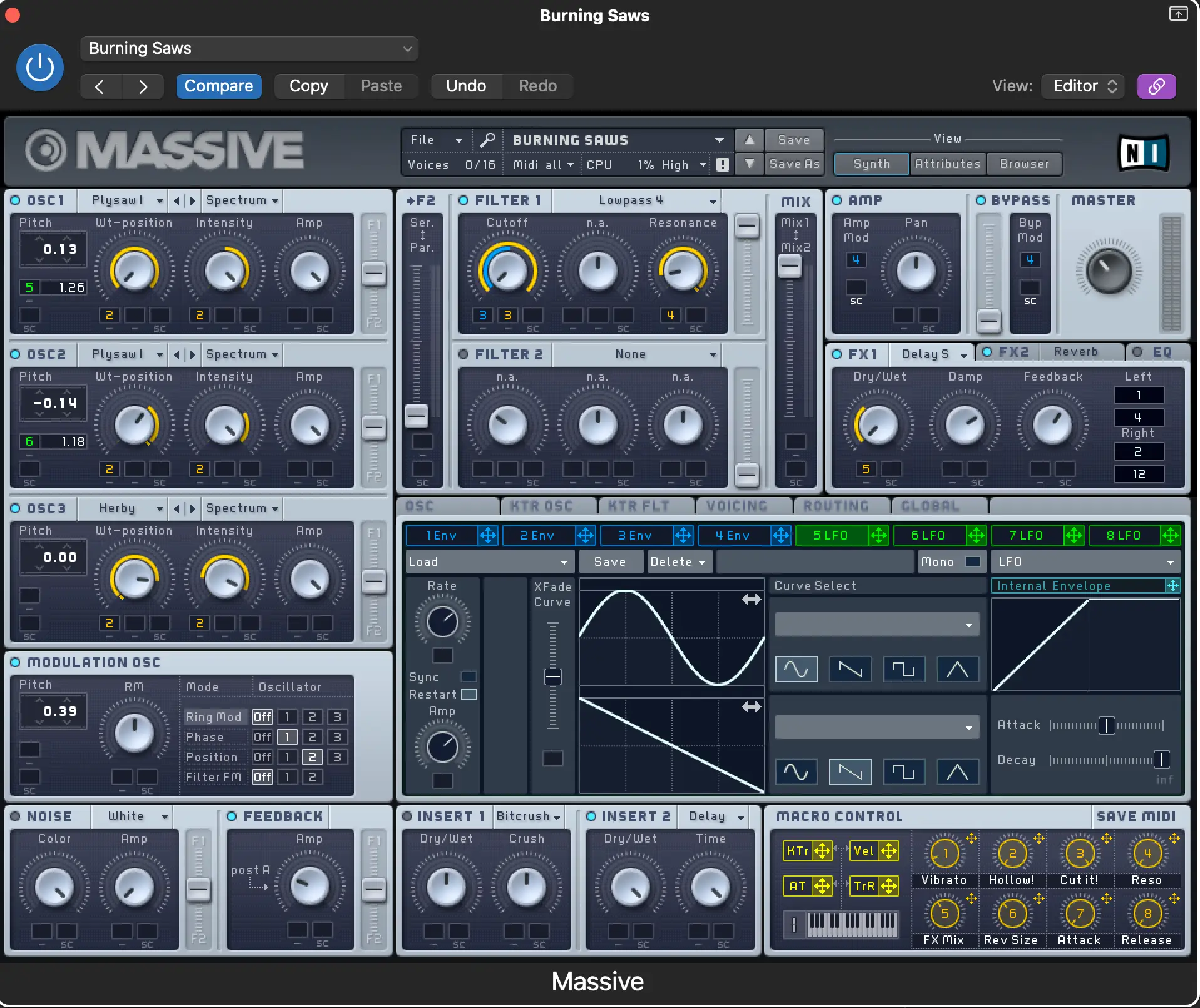
And a custom sound built in Logic's native ES2 synth:
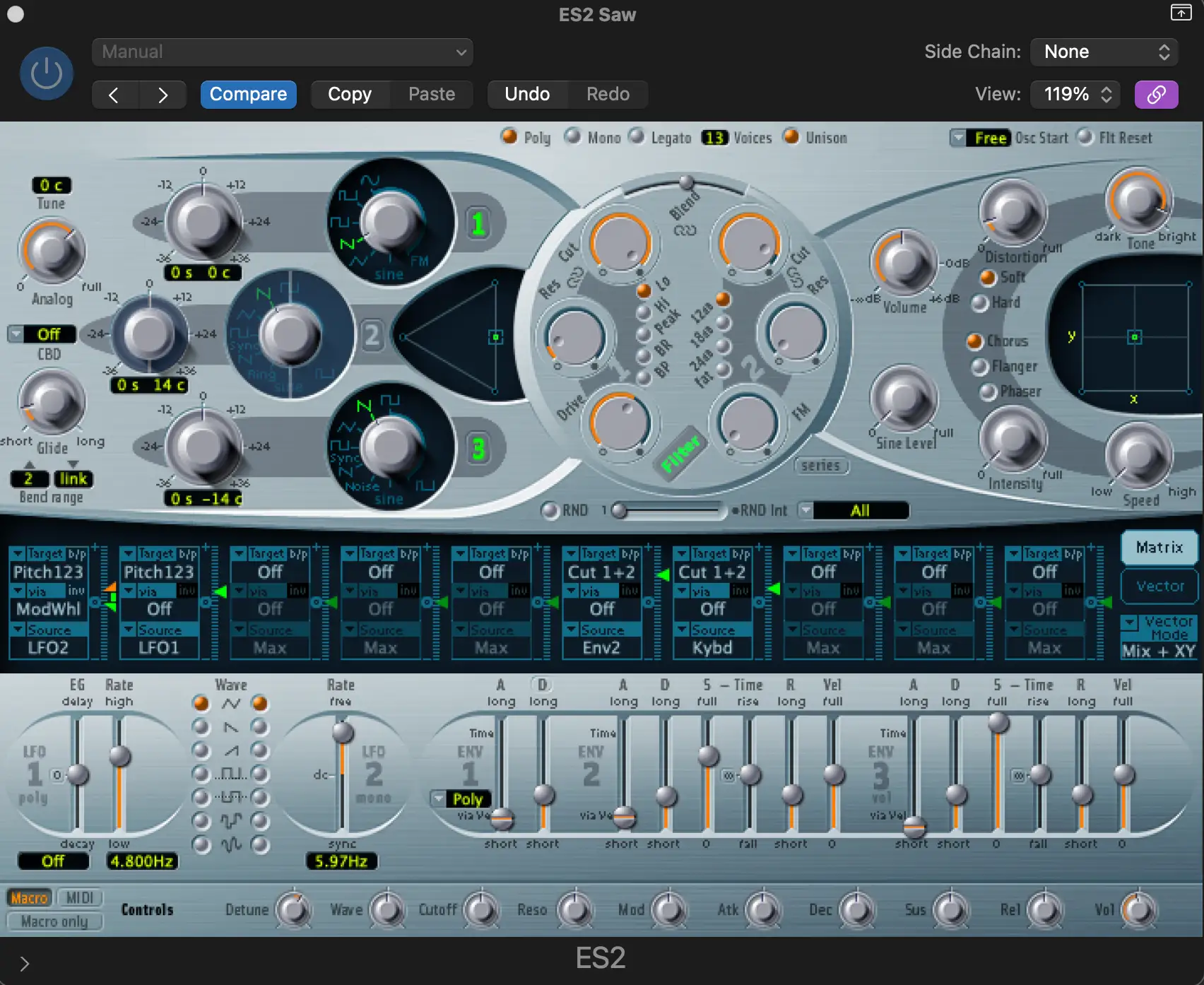
Here's what they sound like together:
How to Make Hardstyle: Step 3 - Write the Melody
Now we have the basic sounds in place it's time to write the melody of the track. Hardstyle tracks can have multiple melodies, but it's always a good idea to keep all your melodic elements related to the main melody.
What makes a good hardstyle melody?
You're the artist so really it's up to you. Do you want to be dark and aggressive, or euphoric and uplifting? Whichever direction you take, when it lands in the climax section you want everyone to know it!
If you're new to writing melodies don't worry - help is at hand ! The main thing is to keep it simple - use a small handful of notes, and don't get too fancy with the rhythms.
Here's the melody I've come up with for this track.

While it uses a total of 8 different notes, there's a clear focus on only a few, which will be great for developing other melodies for different sections.
Here's what it sounds like:
How to Make Hardstyle: Step 4 - Write the Chords
Our next step is creating the chord progression . I don't want to get too far into music theory land here, but suffice to say you want the main pitch or pitches of the melody to be part of the chord that is playing under it.
In the example above, the main notes are A and E in the first and third measure, and G and D in the second. So I'm going to use the following progression:
Am - G - D - G
The note E isn't part of a D major chord, but that's where the tension comes in ;)
For the progression I played higher chords off the beat, and at the same time held down the root of each chord in a lower octave, like this.
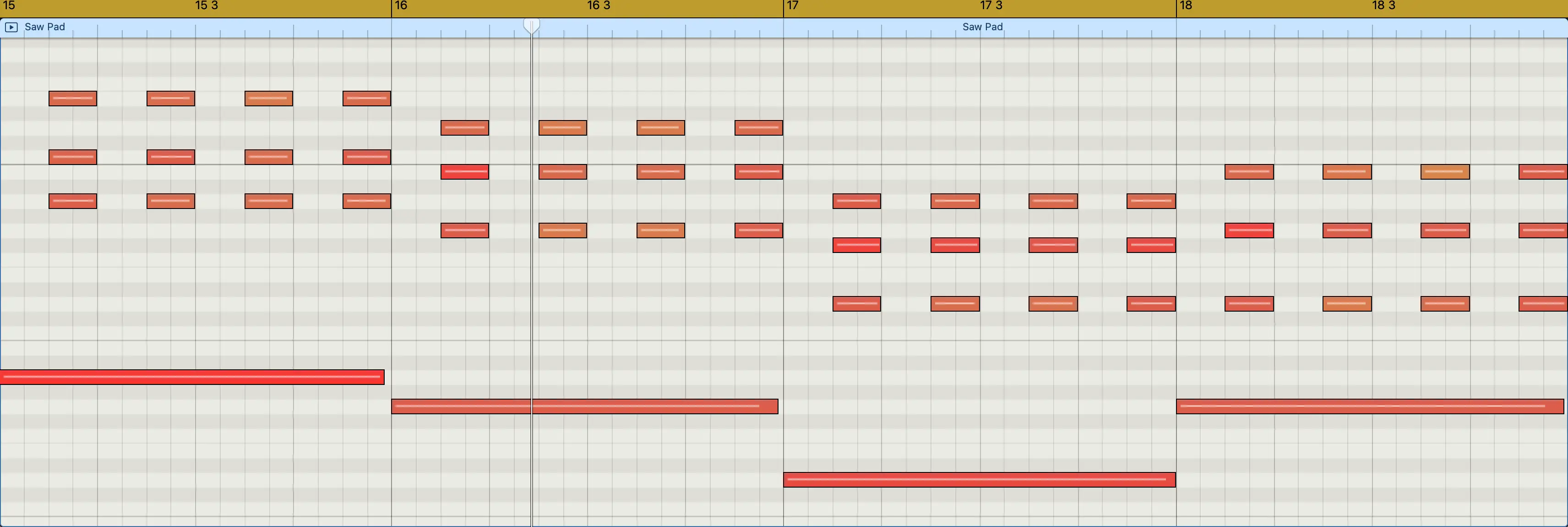
For creating the sound I built a simple sawtooth pad in Omnisphere, and used an LFO to modulate the filter cutoff for interest. Here's what the progression sounds like:
How to Make Hardstyle: Step 5 - Add Effects & Processing
Before we get to the arrangement there's still some work to be done!
Add Effects to the Lead Melody
To begin I'll set up a reverb on an aux send . I'm using Native Instruments' excellent Raum , but any spacious reverb plugin will work. Then I'll add sidechain compression to the reverb so it ducks every time the lead melody plays.
I'm using Logic's stock compressor and setting it to sidechain to Instrument 4 - the lead saw.
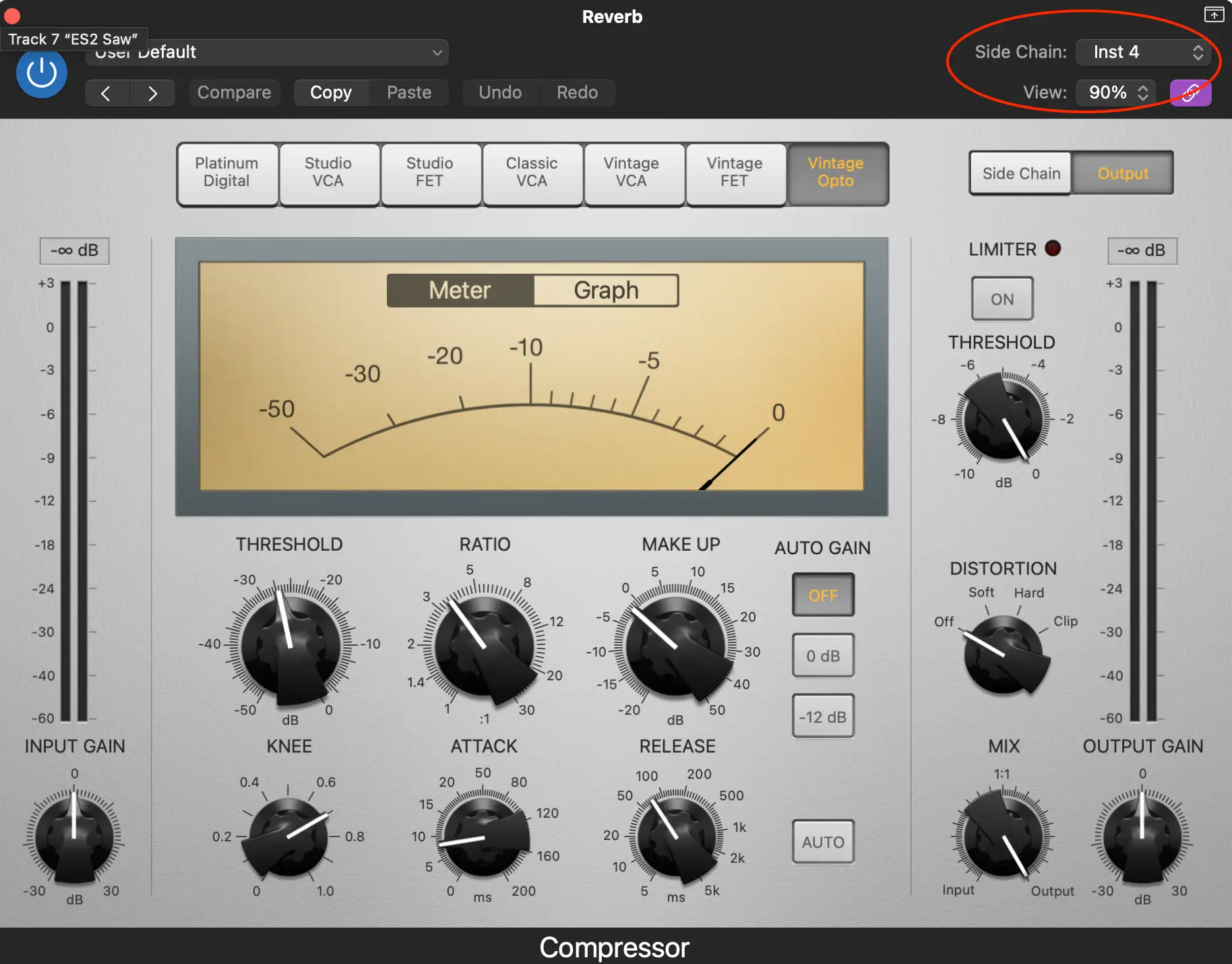
I've done the same thing with a delay plugin on a separate aux channel, along with it's own sidechain compression.
Next, I've added compression, saturation distortion and subtle EQ to the lead sound. Here's what it sounds like before and after all the effects have been added:
Sidechain the Instruments to the Kick Drum
Sidechain compression is such a key component of EDM because it helps the drums cut through the mix. And since the kick drum is so crucial to hardstyle I want to make it stick out above everything else.
First, I'll route all the instruments to their own bus:
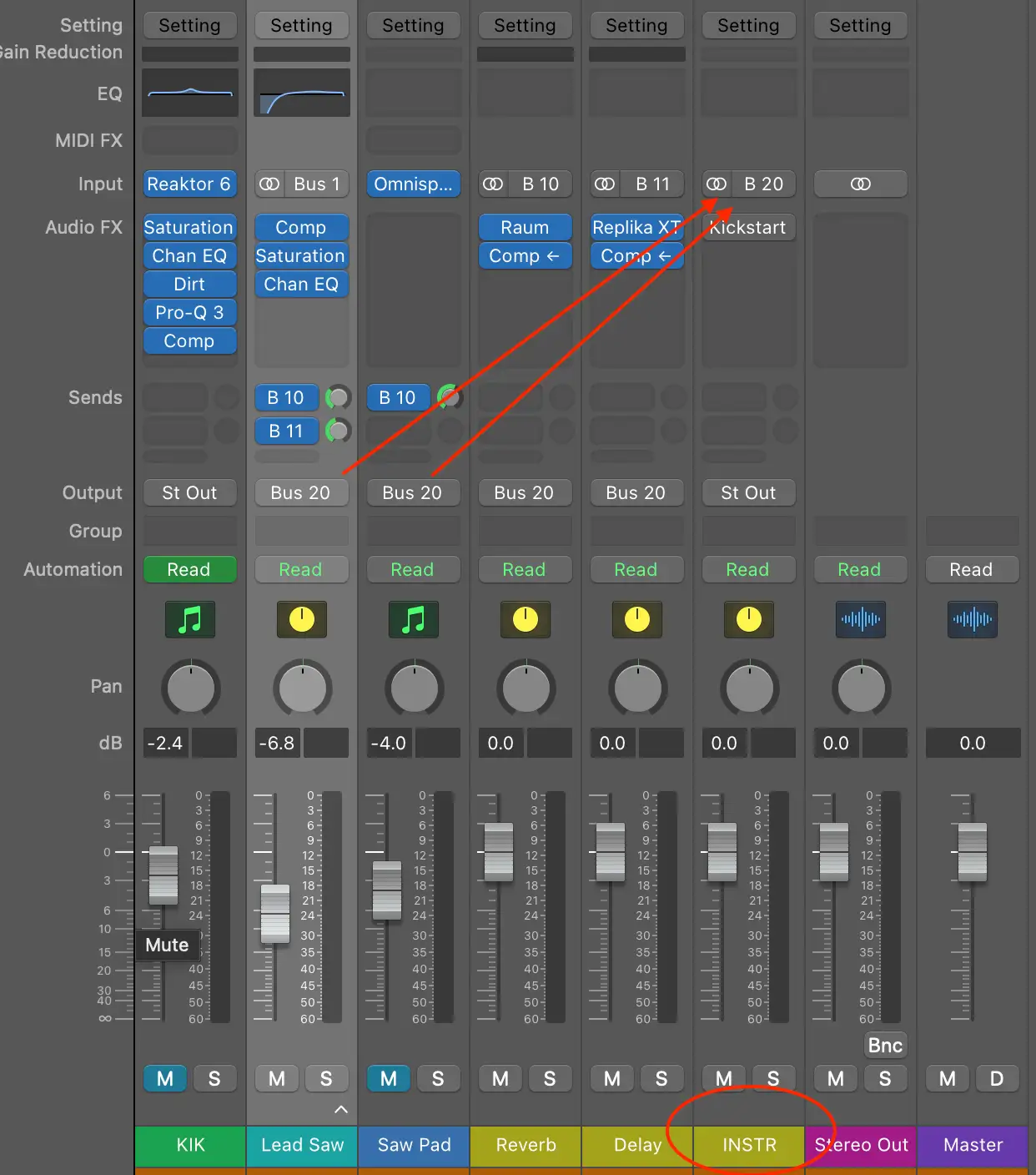
Then I'm using Nicky Romero's Kickstart plug in to emulate sidechain compression from the kick drum.
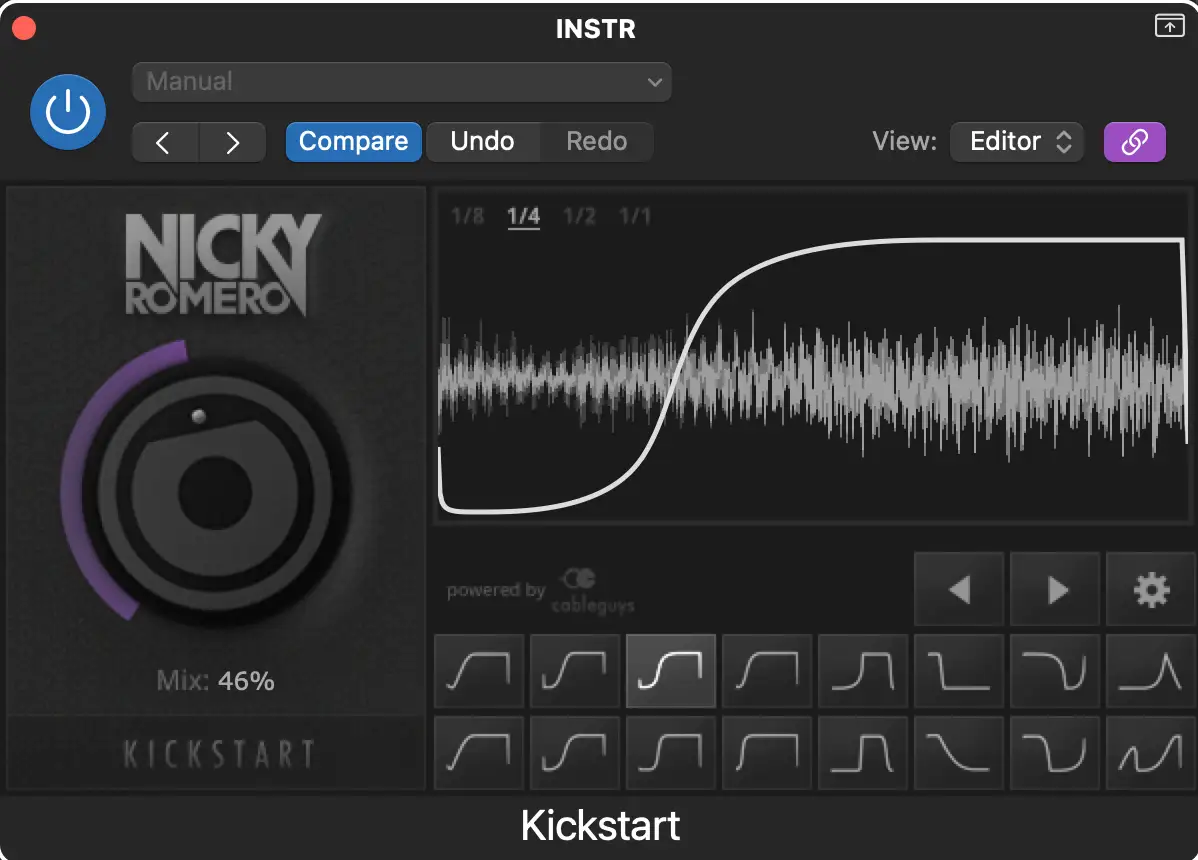
Here's what it sounds like before and after sidechaining everything to the kick:
How to Make Hardstyle: Step 6 - Build the Arrangement
Now we've got the main drop more or less sorted it's time to start building the arrangement.
Here's the structure we went over earlier:
Intro - MidIntro - Break - Climax - MidOutro - Outro
Set up markers in your DAW for each of these sections, and copy your main drop to the climax section:
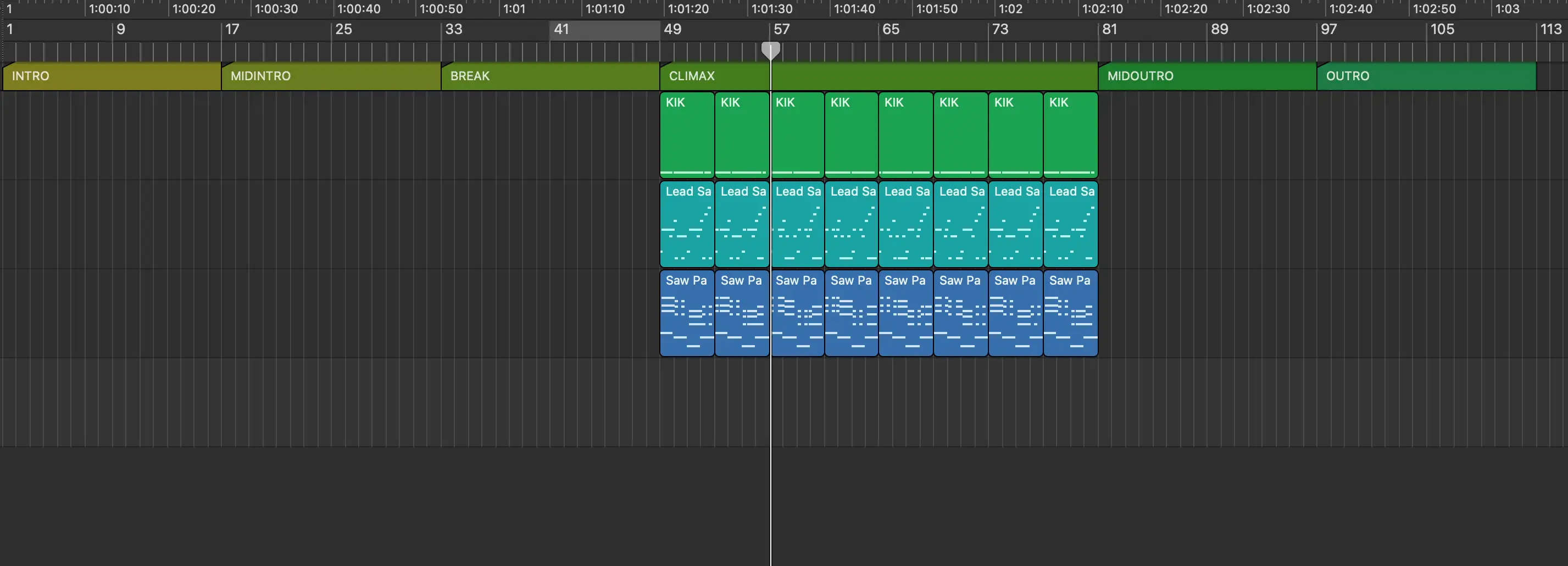
From here it's down to your artistic choices to build up to the drop. Here's some ideas of what you could add:
- Pitch your kick drum to match the chord progression
- Use different kicks for the Intro and MidIntro section
- Add a bassline to accompany the chord progression
- Use different samples and sounds on new tracks to create variation
- Vocals - another favorite among hardstyle producers is using spoken vocals during the MidIntro or Break sections. Find samples online, or create your own!
- Percussion - add a cymbal to denote the beginning of a section, or use claps to build up to the drop.
- Transition effects and other samples: uplifters and downlifters are great for the sections either side of the climax.
- Scratches and other melodic tracks can be used in the Intro/MidIntro and Outro sections.
Here's my full arrangement, with some additional samples, percussion, and transition effects:
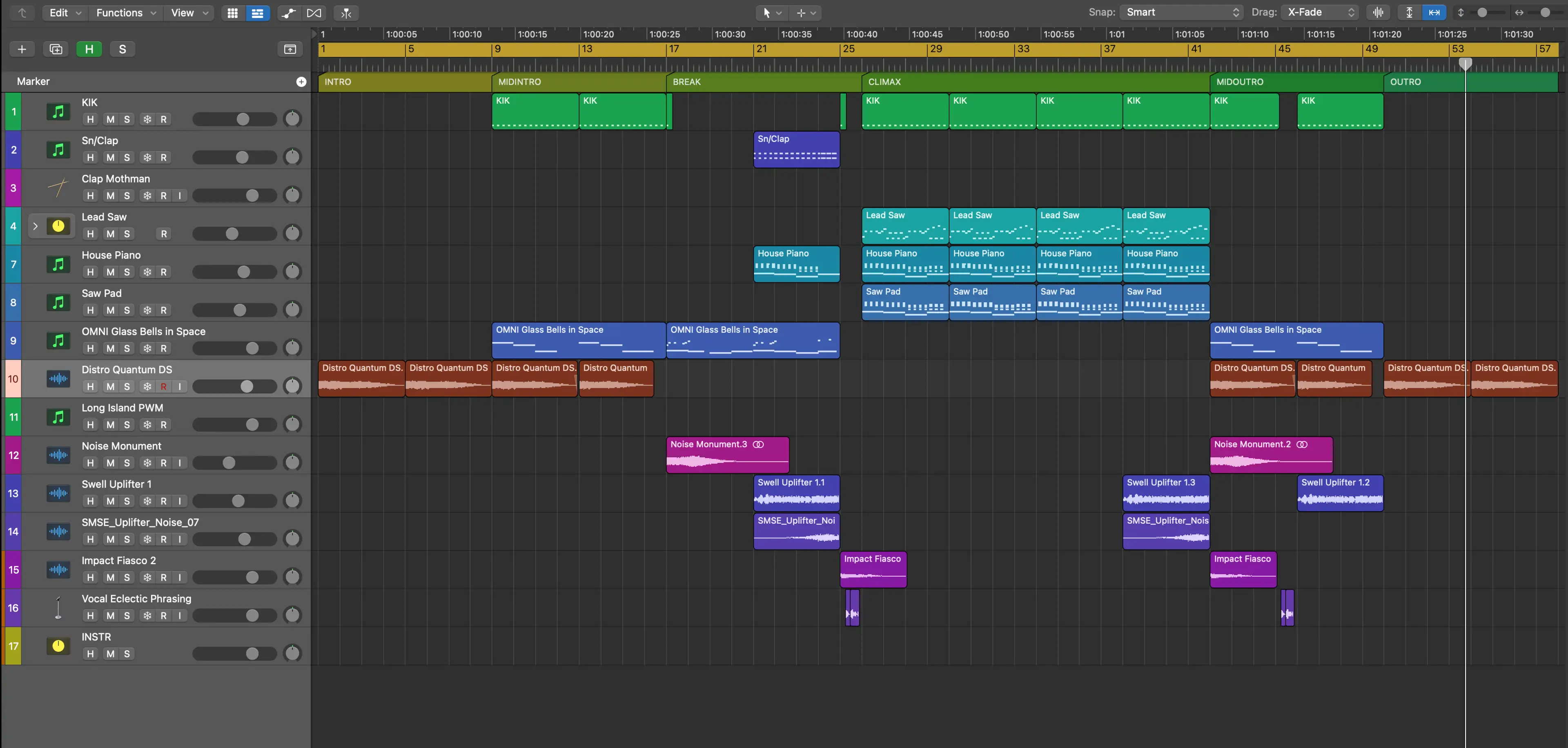
What DAW Should I Use for Creating Hardstyle Music?
Many hardstyle, and more broadly, EDM producers favor Ableton Live or FL Studio for producing hardstyle music. Both have their features and benefits , but whenever people ask me which is the best digital audio workstation to use, my answer is always 'the one you know best'.
Whether you use Logic, FL Studio, Ableton Live, or another DAW, the process for making hardstyle music is the same. Follow the steps above to get you started, and keep listening to hardstyle artists (and music from other genres too!) to develop your own voice.
Now go forth and maketh the hardstyle music!





